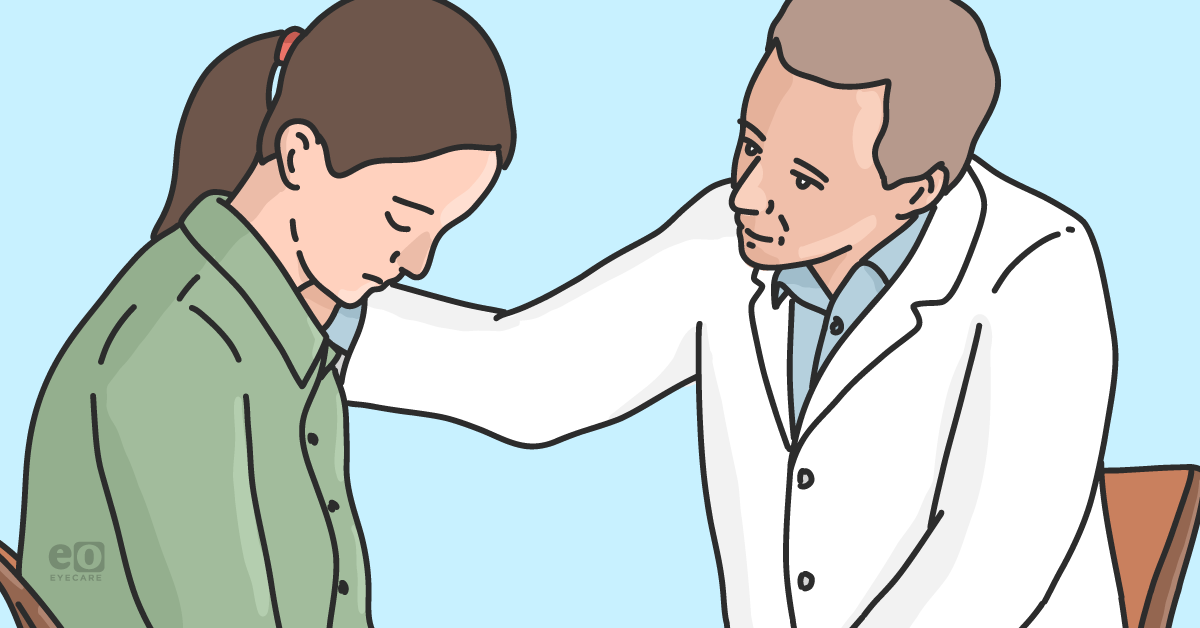“What can I do to help?” This is a common question that many practitioners have when it comes to mental health. Many of us want to help but are unsure of where to start or what to say. Unfortunately, there is no single right answer or “proper treatment plan” for patients with mental health issues.
Luckily, one of the best ways to address these cases can be boiled down to a few simple steps. In my years of working with individuals experiencing psychological distress, I have discovered that some of the best ways to help are to listen, ask questions, explore, and follow up.
Listen and acknowledge
Listen to the issue. Often times, we’re so focused on
completing an eye exam on time that we forget that an important aspect of treatment is to simply listen to our patients’ concerns. Take a second to listen carefully to what your patient is telling you. Active listening is a practice that should be implemented and refers to the listener being fully concentrated and engaged through understanding, responding, and remembering what is being told to them.
It may take a while for your patient to open up to you but if/when your patient is ready to be open about their issues, listen! It’s that simple, and it’s a great sign that you have gained their trust and feel safe.
Many of us have experienced relief simply from sharing our problems with someone. Listen to your patient. Often times, these patients are just looking for someone to listen to their concerns or for an outlet for their frustrations. Listening and acknowledging them can help to diffuse emotion but can also communicate care. In some situations, that may be enough for your patient! Perhaps you will pick up hints of something that could be affecting their mental state and impacting their ocular health or even adherence to your medical instructions.
Ask more questions
Having listened to the concerns of our patient, the next step is to ask open-ended questions. You can better understand their situation by asking non-leading questions and acknowledging their emotions. Reassure the patient that you are there to listen and that you care about their issues.
Doctors will sometimes choose not to open the Pandora’s Box that is casual patient conversation. However, it is through these conversations that we, as health practitioners, can learn about our patients’ real situation. It’s an opportunity to learn something crucial about our patients’ well-being and dig a little deeper.
Perhaps someone is not taking their medication as instructed or not adhering to your recommendations. Get to know the situation and then take the next steps accordingly. Not only does this reassure the individual that you genuinely care, but it also helps you better understand the situation.
Explore options and refer
Work with your patient to find the best services and experts to support their case. Rather than telling the patient what to do, work with them to figure out what their preferences are and what resources will be the most beneficial for them.
Referrals are important because you can connect your patient with experts that can provide the best support and help find the most valuable solutions.
Do not feel like you are alone and have to help your patient without support. There are other experts and services out there that are better suited for helping your patient treat or manage their concerns or condition. Working together with the patient will help empower them to be involved in that process!
Some questions to ask:
- What would make you feel better about this situation?
- What kinds of solutions have you thought about?
- If any outcome were possible – what would you want to see?
When to refer out:
- Patient is experiencing problems that they cannot cope with.
- You are unable to provide meaningful assistance.
- Patient is displaying behaviors, or behavior has been reported by another person, that warrants a referral.
What does a good referral look like?
- Be Specific: Identify a specific person or resource that is suitable for your patient and the situation.
- Provide a take-home: Write down the information for or offer to contact the specific person or service that you are referring to so that your patient can easily access this information later on.
- Explain: Provide some insight on what the interaction may look like and what your patient can expect from this resource. Talk to your patient about when and for what reasons they should consider contacting this service for further support.
Follow-up
Check in on your patients after your initial conversation. This can come in the form of booking a follow-up appointment or as simple as sending a quick email. You may say something like: “I would like to follow up with you in a few days to see how you’re doing. Is this okay with you?” As always, make sure to document the interaction.
This type of follow-up allows you to check back in on your patient and see if anything has changed with their condition or situation. Once again, it communicates that you care and that you can be more than just their eyecare provider. One key benefit of this step is that it helps patients from “falling through the cracks” and provides a second opportunity to reflect on their situation and how best to manage it together.
By addressing concerns that aren’t limited to just the eyes or physical anatomy, we are showing that we are an important aspect of our patient’s overall well-being.
Resources
- Generalized Anxiety Disorder Assessment (GAD-7): A self-administered patient questionnaire used as a screening tool and severity measure for generalized anxiety disorder (GAD).
- Psychological First Aid: First aid course provided by the Red Cross. Provides knowledge and techniques to recognize and assist people in crisis after experiencing loss, grief, trauma, and stress, with an emphasis on self-care and personal protection.
- University of British Columbia – Residence Life Peer Helping Workbook
